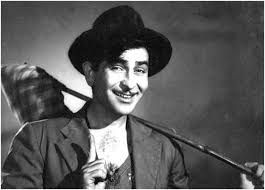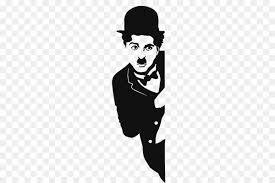A Legacy of Silent Revolution:

The impact of Charlie Chaplin on society extends far beyond his iconic mustache, bowler hat, and the unforgettable character of “The Tramp.” He was not just a master of silent comedy but a revolutionary artist who redefined how the world perceived film and its potential to speak to humanity. Rising from the depths of poverty, Chaplin became one of the most influential figures in global entertainment. Yet, beyond the slapstick humor and expressive pantomime, his work carried profound social meaning. The impact of Charlie Chaplin on society was socially transformative—he broke class barriers, challenging authority, and inspiring millions around the world.
His Early Life Journey:
Charlie Chaplin was born on April 16, 1889, in London, England, His childhood was riddled with hardship, experienced deep poverty and familial instability from a young age. Both of his parents were music hall performers, but his father died early due to alcoholism and his mother suffered from mental illness. As a result, Chaplin and his brother Sydney often found themselves in workhouses and orphanages,were forced for survival.
These early struggles shaped Chaplin with deep empathy for the downtrodden. Despite the challenges, Chaplin joined a children’s dance troupe and began performing in music halls at an early age. His natural talent for mimicry and physical comedy helped him rise quickly. These formative years, filled with poverty and adversity, made Chaplin acutely aware of social inequalities, which he would explore deeply in his later works. These life experiences laid the foundation for the compassionate lens through which he would portray the world. The adversity he endured shaped the deep empathy that fueled the impact of Charlie Chaplin on society, giving him a first-hand understanding of social injustice that would later define his work. His long-time working relationship with actor Henry Bergman and his brother Sydney Chaplin, who helped manage his business affairs, were also pivotal to his career success.
The Relationships of Charlie Chaplin:
Charlie Chaplin’s life was marked not only by cinematic genius but also by complex and highly publicized relationships. His romantic life, in particular, drew as much attention as his films, often stirring both admiration and controversy. Chaplin married four times, often younger than him.
- Mildred Harris (1918–1920):
Chaplin’s first wife, an actress, married him when she was just 16 and he was 29. Their marriage was brief and strained, ending in divorce after the death of their infant son. - Lita Grey (1924–1927):
His second marriage was to actress Lita Grey, whom he met when she was a teenager. Their relationship was controversial due to her young age (16) at the time of their marriage. The union was tumultuous and ended in a scandalous and very public divorce. - Paulette Goddard (1936–1942):
A more stable and creatively fruitful relationship, Paulette starred alongside Chaplin in classics like Modern Times and The Great Dictator. Though the details of their marriage were kept private, the two eventually separated amicably. - Oona O’Neill (1943–1977):
Chaplin’s final and most enduring relationship was with Oona O’Neill, daughter of playwright Eugene O’Neill. He married her when she was 18 and he was 54—a union initially met with criticism. However, their marriage lasted until Chaplin’s death and produced eight children, including actress Geraldine Chaplin. At last, Oona who remained his loyal companion, supporting him during his exile and old age.
The personal and professional relationships of Charlie Chaplin deeply influenced his life and art. While some were troubled, others were deeply meaningful and enduring. His partnership with Oona brought him peace.
Influencing Future Generations:

The impact of Charlie Chaplin on society is not limited to Hollywood—it extends far beyond, reaching the hearts of artists across the globe, including those in Bollywood. Over the years, many acclaimed filmmakers and performers, such as Roberto Benigni, Rowan Atkinson, Woody Allen, and Richard Attenborough, have openly acknowledged Chaplin as a foundational influence in their work. In fact, Raj Kapoor often reflected Chaplin’s style in his portrayal of the common man, striking a similar emotional chord with audiences.
The writers, musicians, and public speakers around the world continue to draw from his fearless use of art to spark reflection, compassion, and social change. His work has encouraged artists to address social issues head-on, using their platforms responsibly. The impact of Charlie Chaplin on society lives on in every piece of media that dares to challenge injustice while also striving to uplift and unite.
Climbing the Ladder towards sucess from Music Halls to Hollywood
Chaplin’s journey started from street performances in London to the big screens of Hollywood is itself. Then he began performing in music halls as a child, later joining Fred Karno’s comedy troupe. His unique talent caught the attention of American filmmakers, and in 1913, he joined Keystone Studios in California.
Soon after, Chaplin created his most iconic persona, “The Tramp”—a lovable, raggedy character who stumbled through life with humor and grace. This character became a universal symbol of the human struggle and embodied the impact of Charlie Chaplin on society in its purest form. Through “The Tramp,” Chaplin presented issues such as poverty, inequality, and alienation with both charm and critique, resonating across languages, borders, and social classes.
Chaplin’s Work – A Voice for the Voiceless:
The Modern Times (1936) and The Great Dictator (1940) stand as powerful examples of how deeply he cared about society.
In Modern Times, Chaplin portrays a factory worker caught in the ruthless machinery of industrial capitalism. It reflects the exploitation of the working class during the Great Depression and serves as a stark commentary on how mechanization was dehumanizing laborers. Through satire, he challenged society’s obsession with efficiency and productivity, emphasizing the need for compassion and balance.
In The Great Dictator (1940), Charlie Chaplin portrays two distinct characters – Adenoid Hynkel, a ruthless dictator mocking Adolf Hitler, and a kind Jewish barber, representing the oppressed. While Hynkel spreads fear and hatred, the barber symbolizes hope and humanity. This contrast allows Chaplin to deliver a powerful message against fascism through satire and compassion.
His stories humanized these figures and encouraged viewers to reflect on their societal roles. He invited audiences to see the world not through the eyes of the privileged, but through those who struggled most. His silent films communicated universally, touching audiences in every corner of the globe. He made people laugh, but more importantly, he made them think.
Global Recognition
In 1972, when he returned to the United States to receive an Honorary Academy Award—a moment marked by a 12-minute standing ovation. It symbolized a public redemption and a renewed appreciation for the artist who had given so much.
In 1975, Queen Elizabeth II knighted him, adding Sir to his name. These honors highlighted the long-lasting impact of Charlie Chaplin on society, not merely as a comedian or actor, but as a social visionary whose influence crossed disciplines and generations.
The Last Journey of Charlie Chaplin:

Charlie Chaplin was died peacefully in his sleep on December 25, 1977, at the age of 88, in Corsier-sur-Vevey, Switzerland, where he had lived in exile for many years. The cause of death was a stroke. He had been in declining health due to old age and had suffered from multiple health issues in his later years, including difficulty speaking and moving. His funeral was a small, private ceremony as per his family’s wishes.
More Than Laughter: Chaplin’s Legacy of Humanity, A Legacy of Humor, Hope, and Social Change:

He was more than an entertainer; rather, he was a crusader for human struggle and a protector of the downtrodden. Moreover, his films were not only moments of escapism, but also calls for awareness. He revealed society’s flaws while simultaneously celebrating its capacity for kindness and compassion. Even today, in a world still grappling with poverty, injustice, and inequality, Chaplin’s legacy remains as relevant as ever.
Ultimately, the impact of Charlie Chaplin on society is a legacy that is not measured by awards or wealth, but is instead defined by the hearts that were touched, the minds that were opened, and the lives that were changed. His spirit endures, forever walking the fine line between comedy and conscience and a voice to the voiceless which showed the world that even the most ordinary person could carry a powerful message.
